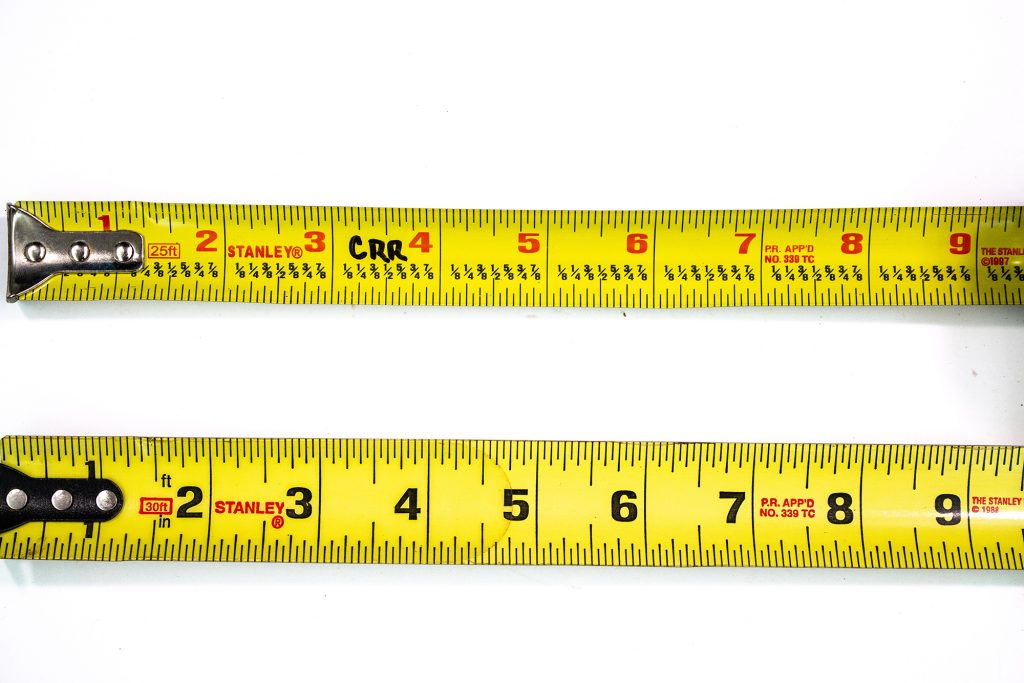2.2 Measuring, Marking, Leveling & Layout Tools
Measuring, Marking, Leveling & Layout Tools
Measuring and marking tools are common to multiple trades and ensure accuracy and quality craftsmanship in the building and construction process. Measuring devices are available in fractional and metric, with classic western construction practices adopting the fractional inch configuration. While some measuring tools have the actual fractions printed (1/2″, 1/4″, and 1/8″) next to each corresponding mark on the scale, many do not and the ability to read the scale without the printed fractions may take time to develop. This is one of many reasons for the adage: “Measure twice, cut once”, which is a good habit to develop and will help to avoid costly mistakes such as over cutting and wasting material or under cutting, resulting in having to remeasure and cut the material again.

Fractional Marked & Unmarked Tape Measures by Gwen Arkin is licensed under CC BY 4.0
While many of the following tools may be considered “carpentry” tools, the majority are regularly used in most all trades. Apparent common items to all trades include measuring devices like tape measures, rulers, and basic estimation tools; plumbers and electricians will use spirit levels, builders levels, and angle finders to ensure that piping is at an appropriate grade or conduit, fixtures, and other items are installed to meet industry codes.
The original version of this chapter contained H5P content. This content is not supported in cloned books. You may want to remove or replace this section.The original version of this chapter contained H5P content. This content is not supported in cloned books. You may want to remove or replace this section.
Levels are used to check for level (horizontal) and plumb (vertical). Trades persons will often use a combination of various levels and squares to complete a project.
Squares are used for layout work to mark square (90°/right angle) and other angles commonly used in building and construction trades indicated on specific types of squares. They are also used to check for squareness and other angles during assembly. Squares can be made of inexpensive molded plastic, lightweight aluminum or durable steel.
